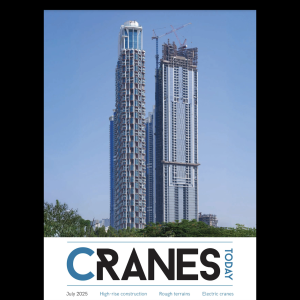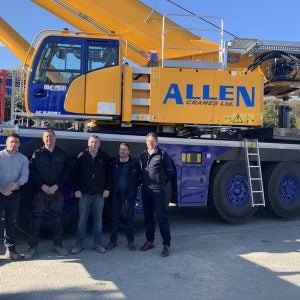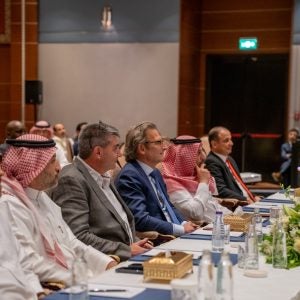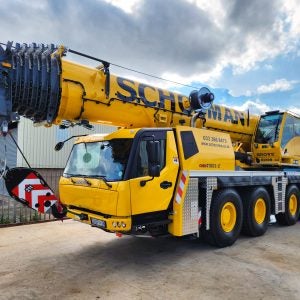From there the cold box was unloaded onto a lowloader and transported over a distance of 2,400 km (1,492 mi) to Chingola in Zambia.
DHL Global Forwarding Company was in charge of this transport and contracted the South African heavy-duty company Vanguard for the road transport. “We have chosen Walvis Bay as landing port because Namibia owns special logistical advantages regarding infrastructure”, explained James Robinson, Vanguard project engineer and manager.
In the run-up extensive planning and authorization procedures had to be carried out. The entire transport distance of 2,400 km was checked. A team of structural engineers was in charge of checking all bridge structures and getting the permits for crossing over them or finding alternatives.
For the transport of the 140t cold box with a length of 50 m, a width of 4.5 m and a height of 6.1 m, the haulage company chose a Goldhofer heavy-duty combination with bolster equipment. Thus absolute manoeuvrability in any kind of transport situation was guaranteed, as the vehicles could clear under the load.
“Due to its manoeuvrability and the levelling, the Goldhofer heavy-duty combination was the ideal solution”, explained Robinson.
The Vanguard transport team made two 10-axle heavy-duty modules type THP/SL available equipped with a so-called long load equipment and two Mercedes Titan tractors with 600 hp each. The rear 10-axle trailer was equipped with a self-tracking device and could also be steered manually if necessary. “Due to the modular system we could put together exactly the combination we needed”, Robinson says.
The transport travelled mainly on the Trans-Caprivi Highway.
After loading in the port the convoy with a total comination length of approx. 70 m and a total weight of approx. 260t sets off. It was the first and biggest transport of this kind that had ever left this port going on its way across Namibia. They continued along the Trans-Caprivi-Highway at 30km/hr (18mph). In Namibia the highway was fine and was only limited with a few buildings. Thus the transport advanced very well.
Not even narrow bends were a problem due to the good manoeuvrability of the trailer. But the closer they were getting to Central Africa the more limited and difficult the road conditions became. Extreme side tilts of the road had to be compensated by Goldhofer module levelling. Again and again curious people lined the highway in order to marvel at this unique transport, so much so that sometimes the convoy was stuck because of the weight of people.
The first problem with the route arose at the Kavango River as the bridge was relatively small and did not possess the necessary bearing capacity for the entire convoy. Therefore, the tractors were uncoupled from the trailer and drove alone over the 60m long bridge. Then the trailer with approx. 180t load was towed with a steel cable across the bridge.
After approximately six weeks they had finally made it, the Konkola Copper Mine in Chingola, which needs it to melt copper. Here the last obstacle had to be taken, a narrow factory entrance.
After the transport the transport team was more than satisfied. “Our decision in favour of the Goldhofer heavy-duty system was right”, Robinson says after the transport. “The good manoeuvrability, the levelling but also the road protection due to the swing axle system of the Goldhofer trailers offered considerable advantages against customary transport systems.”






